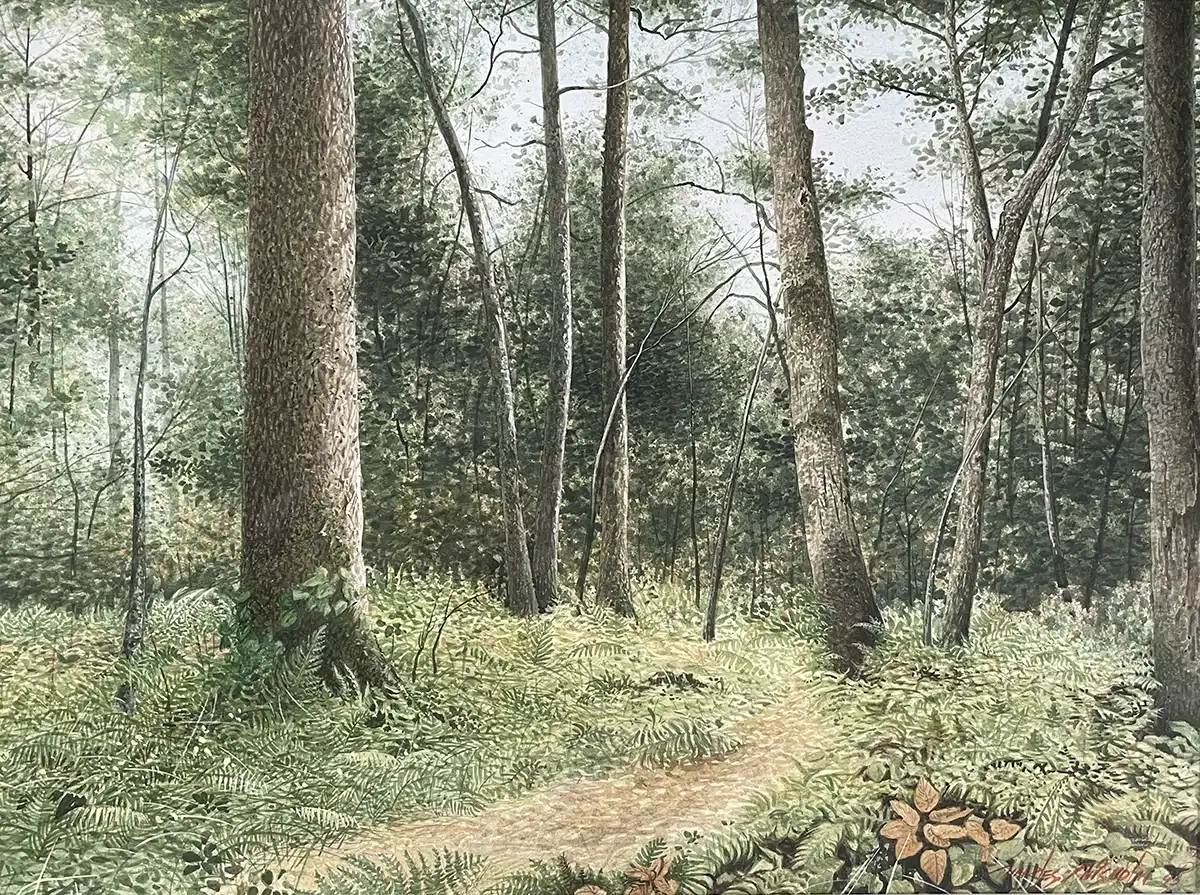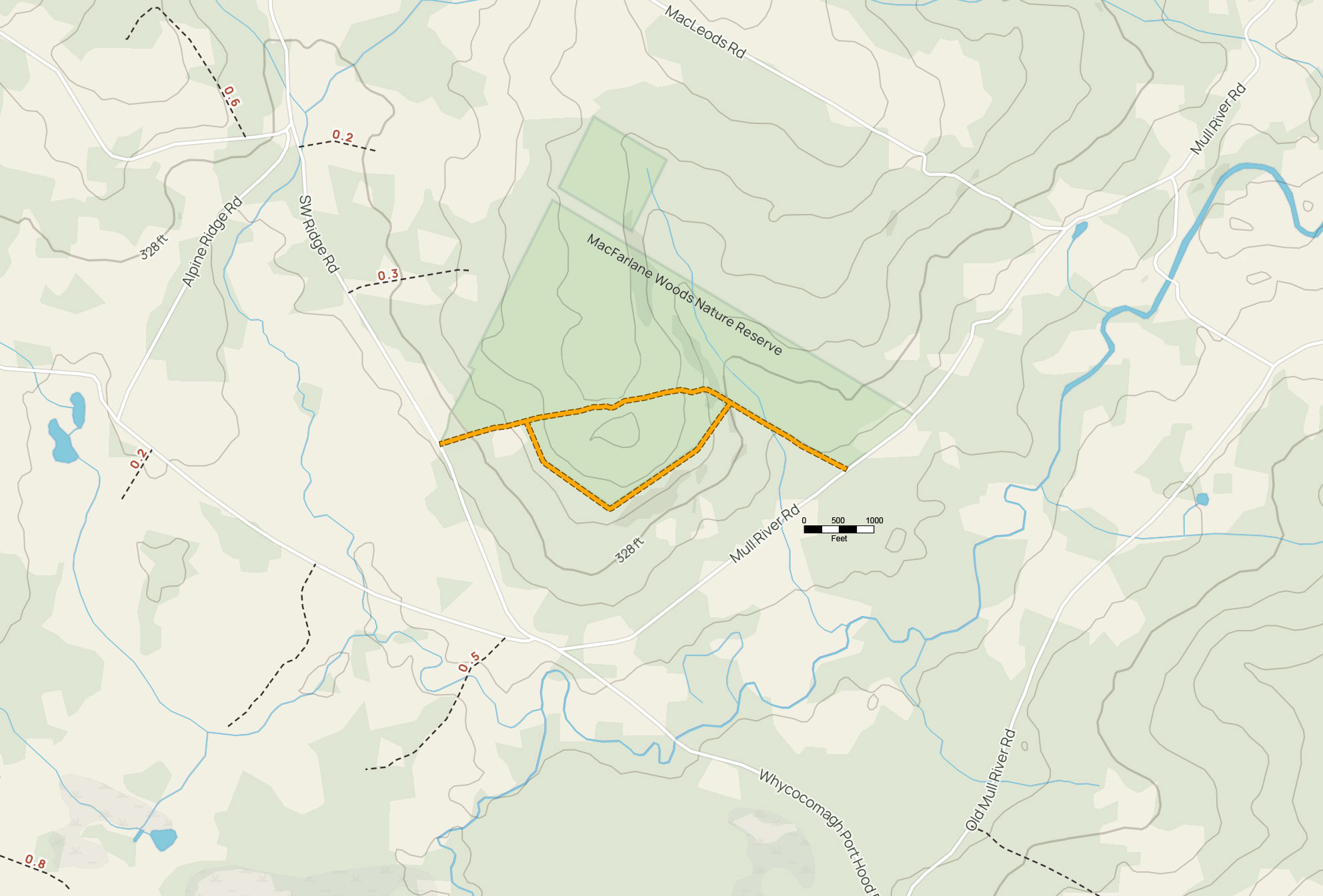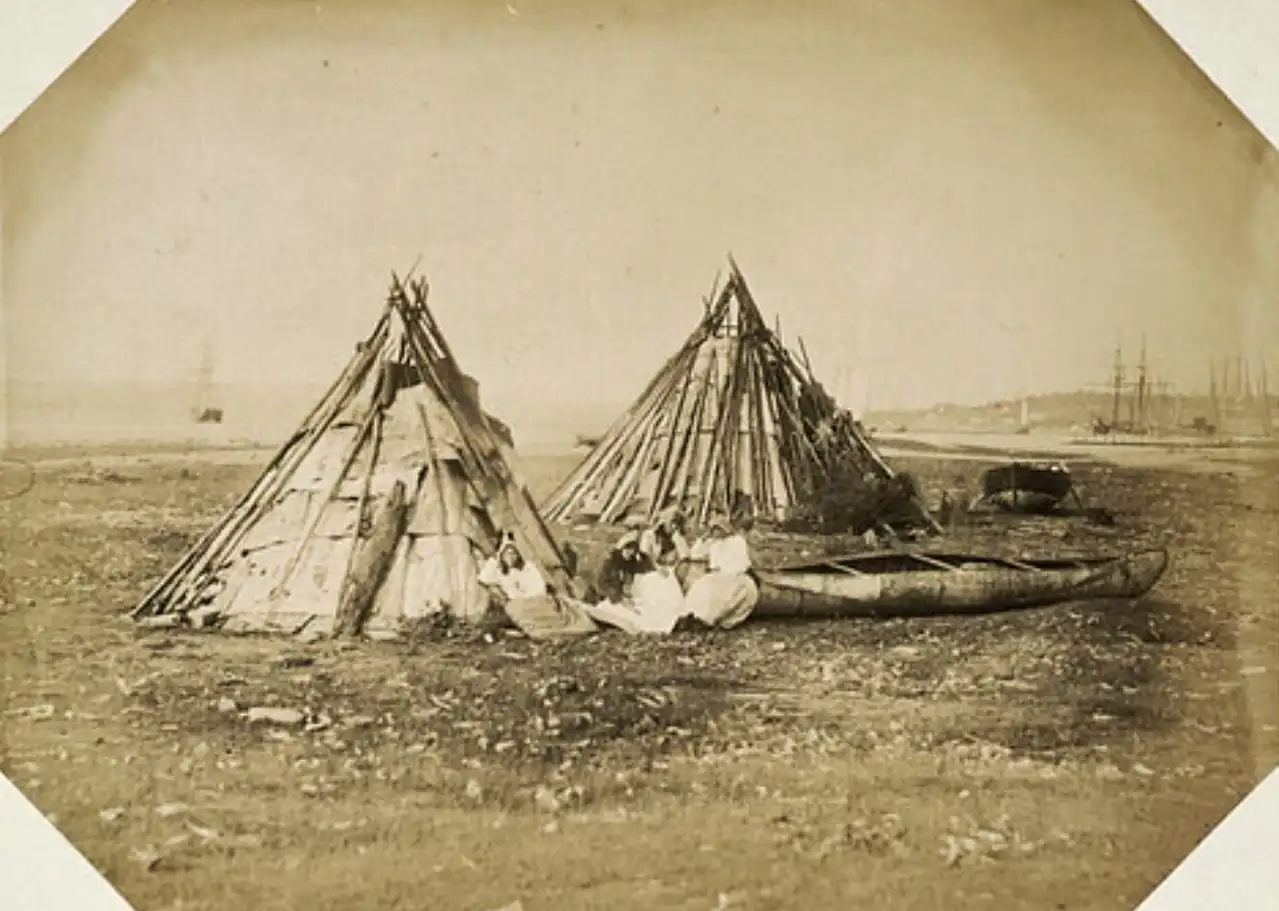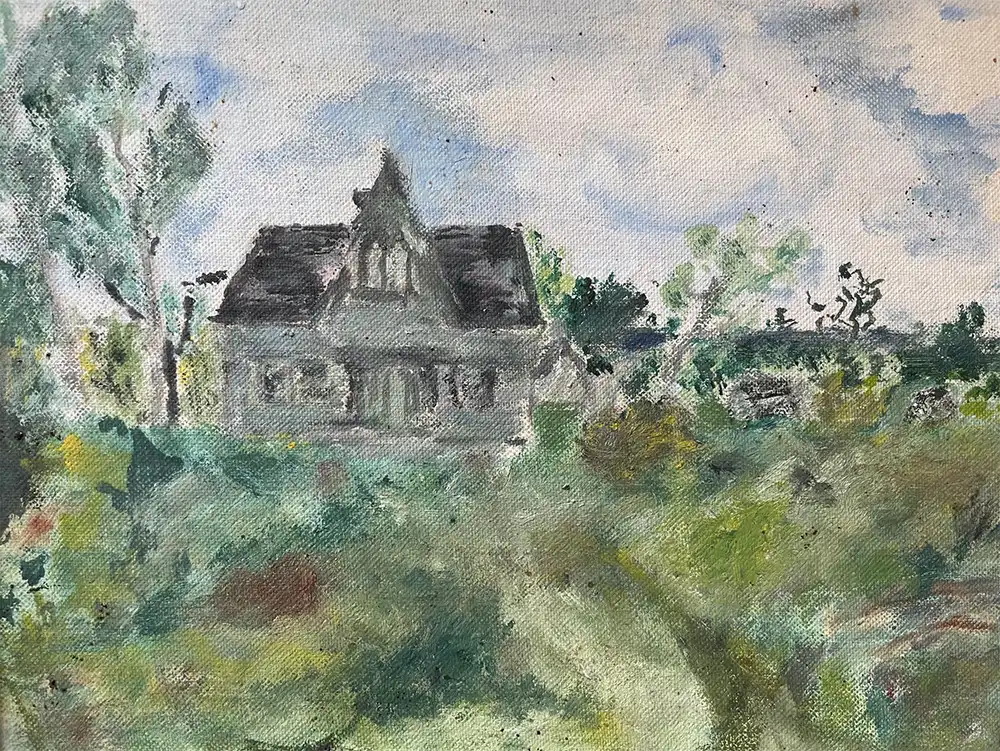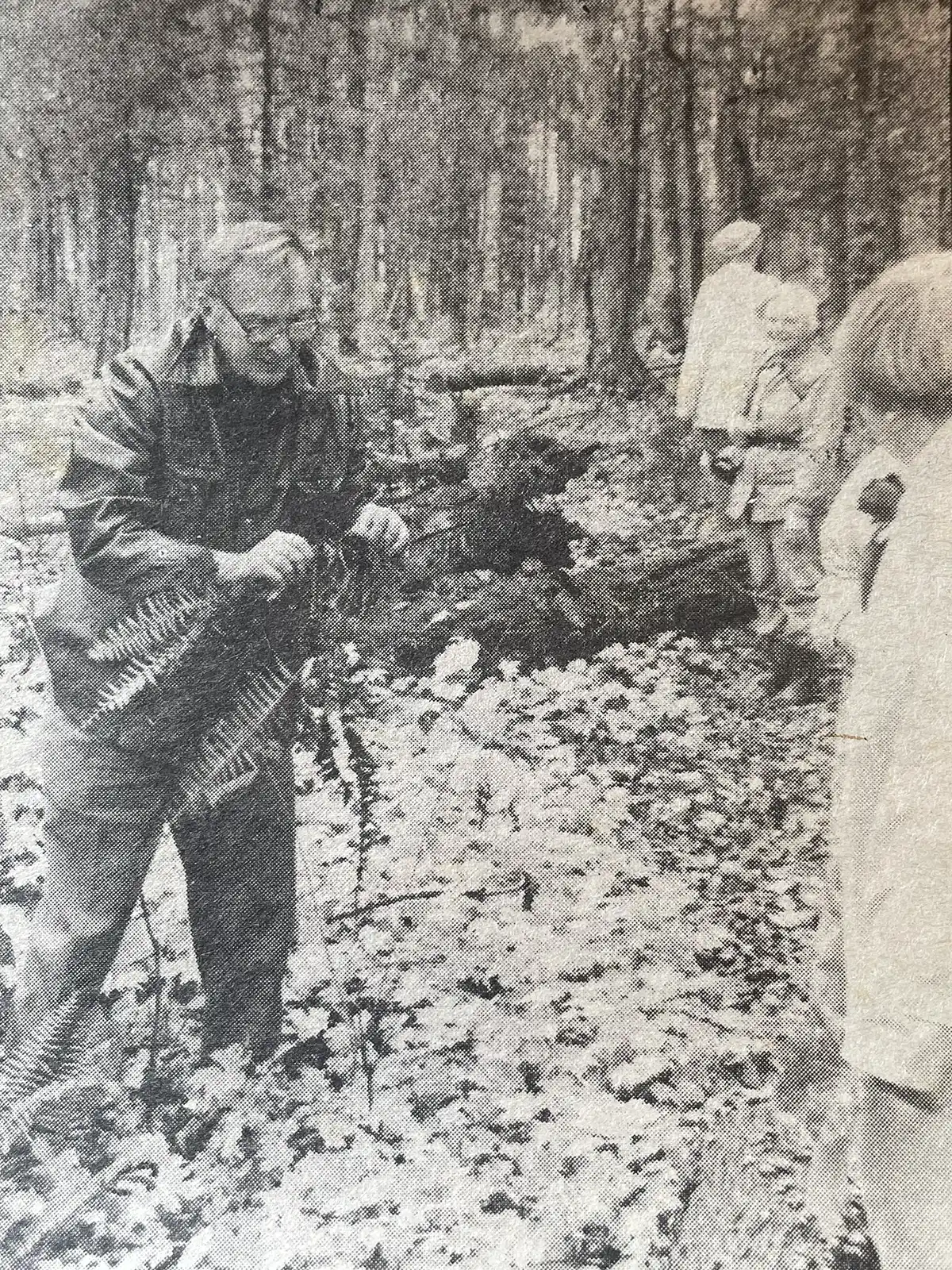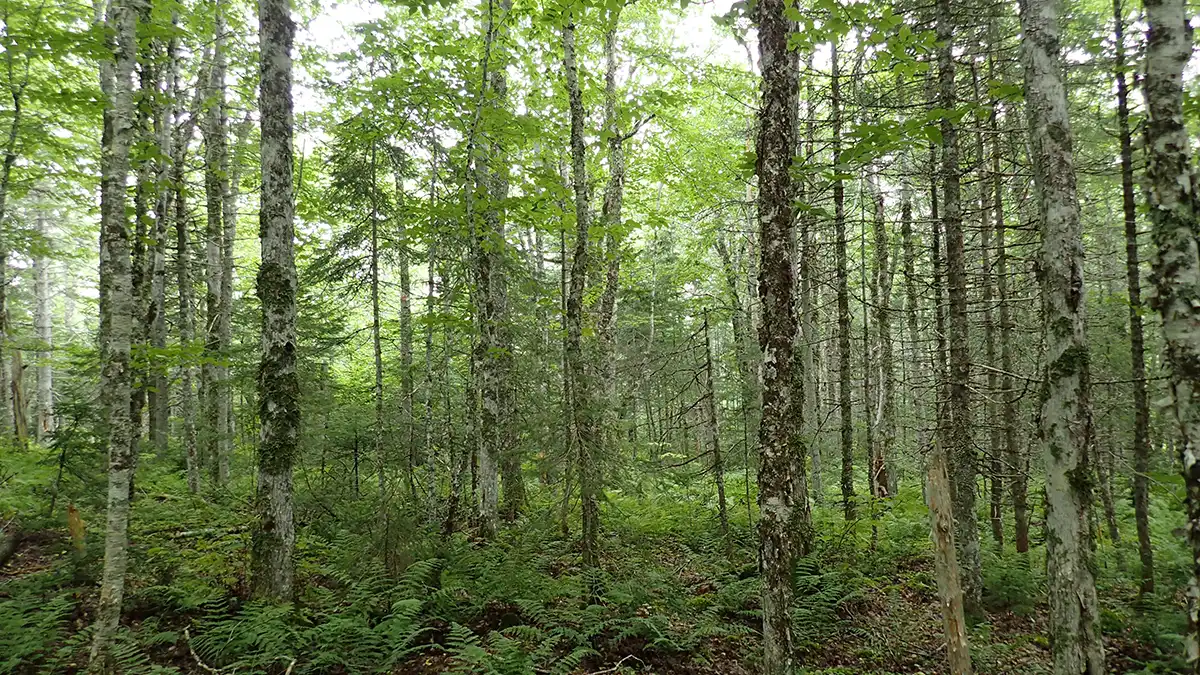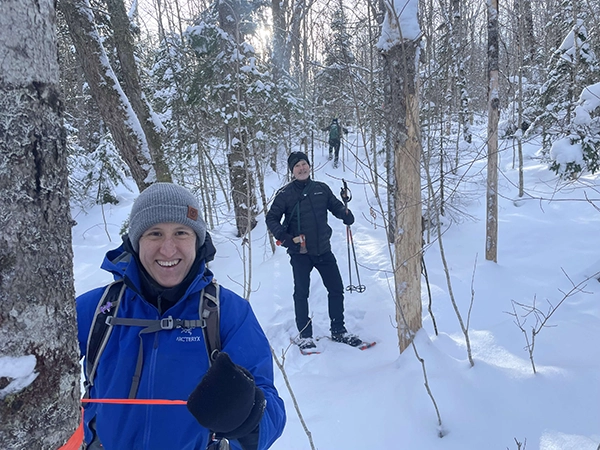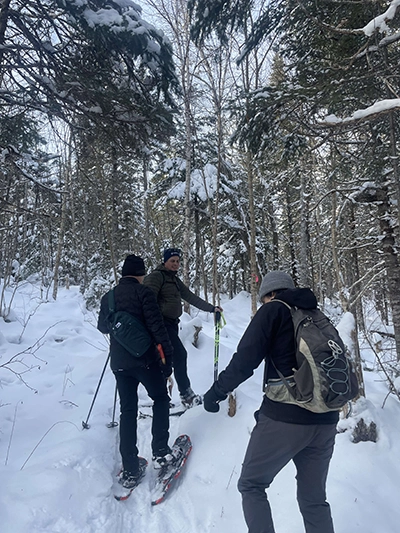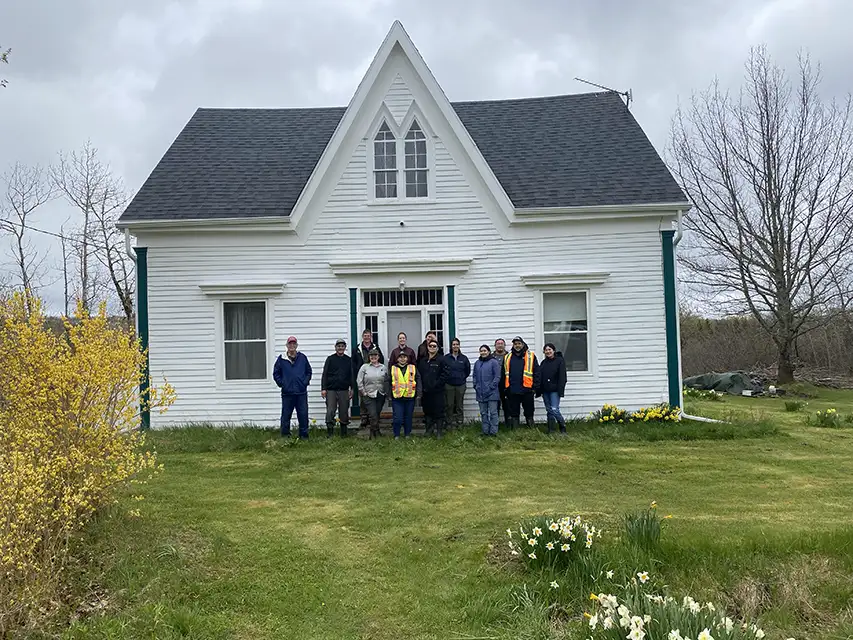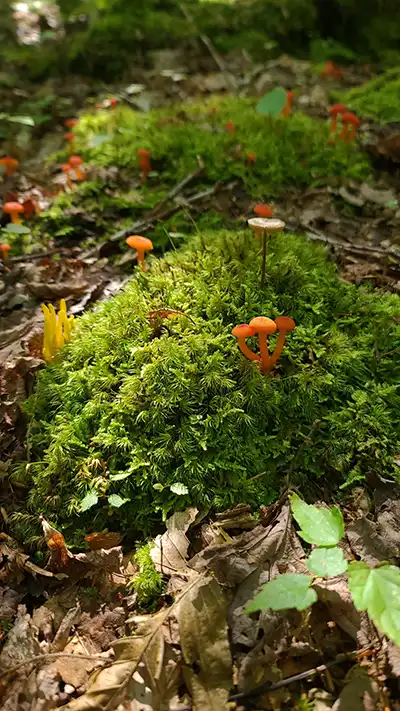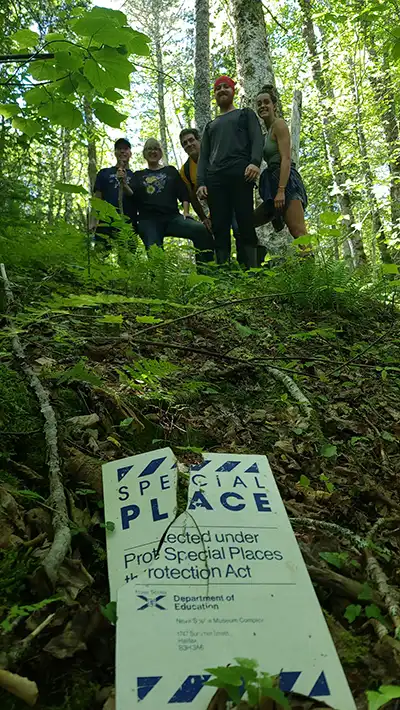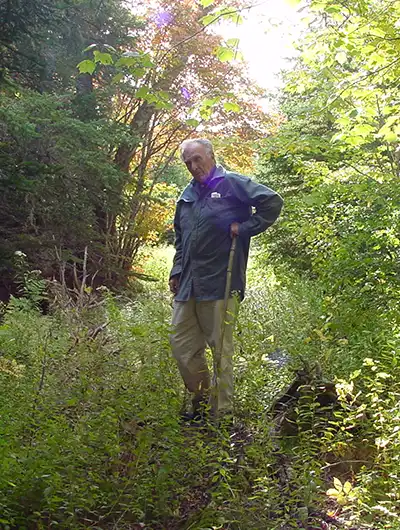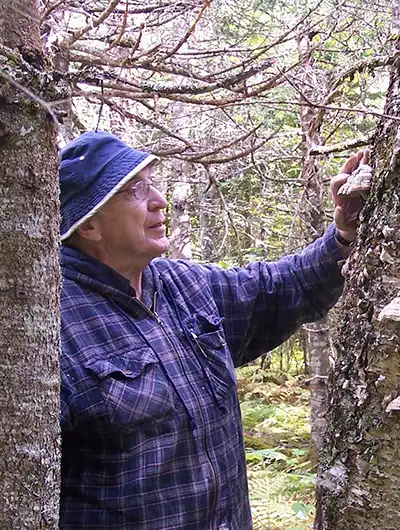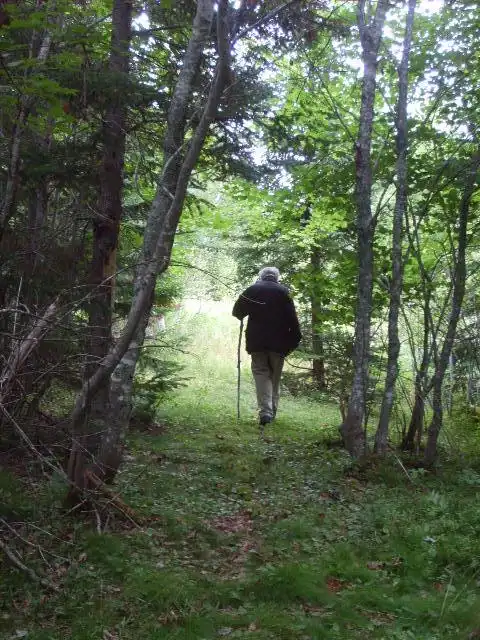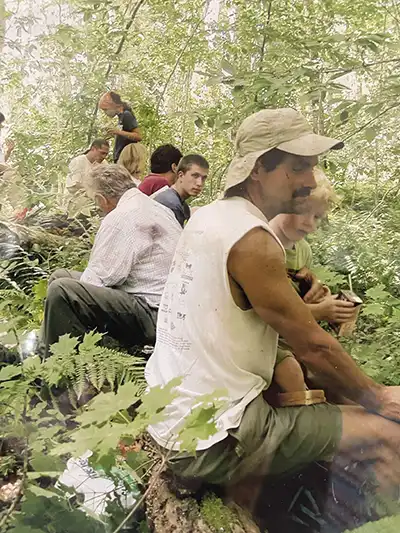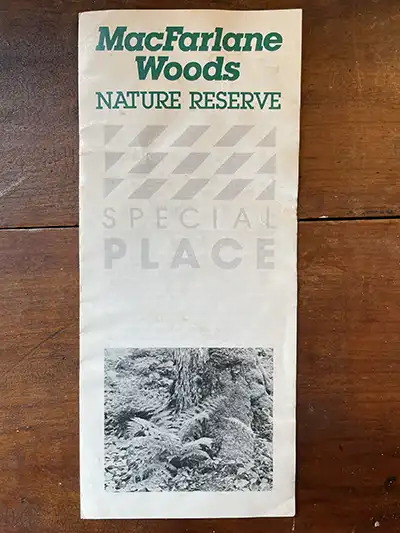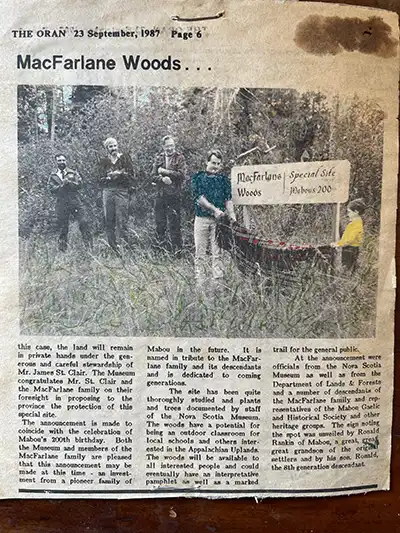Life in a Climax Hardwood Forest
From either MacFarlane Woods entrance, the trail winds uphill passing through younger forest in the process of regeneration from abandoned fields and cut-over areas. The trees that grow here on the slopes of the hill - White Spruce, Balsam Fir, Red Maple and White Birch - are examples of early-growth forest species.
At the edge of the climax forest the grandeur of the towering Yellow Birch, Red Maple and Sugar Maple trees is impressive. Some of the trees are 30m high and a meter in diameter. Although there is often dense ground cover of young trees and other woodland plants, the forest appears open because the canopy is at least 20m overhead.
Large Beech trees are present but, as is common in Nova Scotia, most are small and deformed by beech-bark fungus. Other trees present are Ironwood, White Ash, Striped Maple, Red Spruce and Balsam Fir.
Because hardwood trees lose their leaves in the fall, the ground in the climax forest is covered with a thick layer of humus and leaf litter. In the spring, before the gumtree leaves are fully out, sunlight reaches the ground and a host of woodland plants are able to grow and flower.
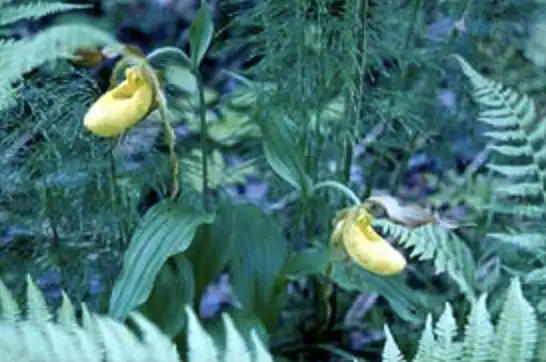
In June, the forest floor is dotted with violets, Wood Sorrel, Starflower and Bunchberry. Unusual plants such as Rattlesnake Fern and Twayblade Orchid are also found.
Later in the season, under the dense shade of the forest canopy, various mushrooms and the pale Coral Root Orchid appear. The old trees and undisturbed ground are covered with dense growths of lichens, mosses and ferns.
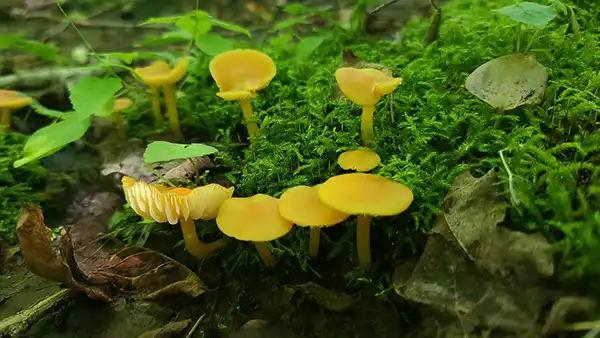
The rich humus and the rotting trunks and limbs of fallen trees provide a moist habitat for snails, beetles, millipedes and a variety of other small creatures. These assist in decomposing fallen matter to soil, and provide food for the Red-backed Salamanders and Wood Frogs found in the woods.
The forest canopy also has abundant bird life in the early summer.
Forest Succession

Succession is a term used in forest ecology to describe the process by which one group of trees growing on a site provides conditions which favor the growth of other tree species.
Succession begins with a pioneer group of trees growing on an open site which gradually creates conditions suitable for other trees that thrive in shady conditions. As these new trees grow they overwhelm the pioneer species and replace them. Eventually the forest community stabilizes and a climax, or mature, foret becomes established.
In upland areas like MacFarlane Woods where the soil is relatively rich and well-drained, a climax forest of Sugar Maple, Beech and Yellow Birch will develop. At this stage of succession these species perpetuate themselves, the seedlings growing in the protective shade of the older trees. A characteristic of the climax forest is that trees of all ages, from seedlings to standing dead trunks, occur together on the same site.
The description was adapted from the MacFarlane Woods Nature Reserve Special Place brochure, produced by the Nova Scotia Department of Education, Nova Scotia Museum Complex.

